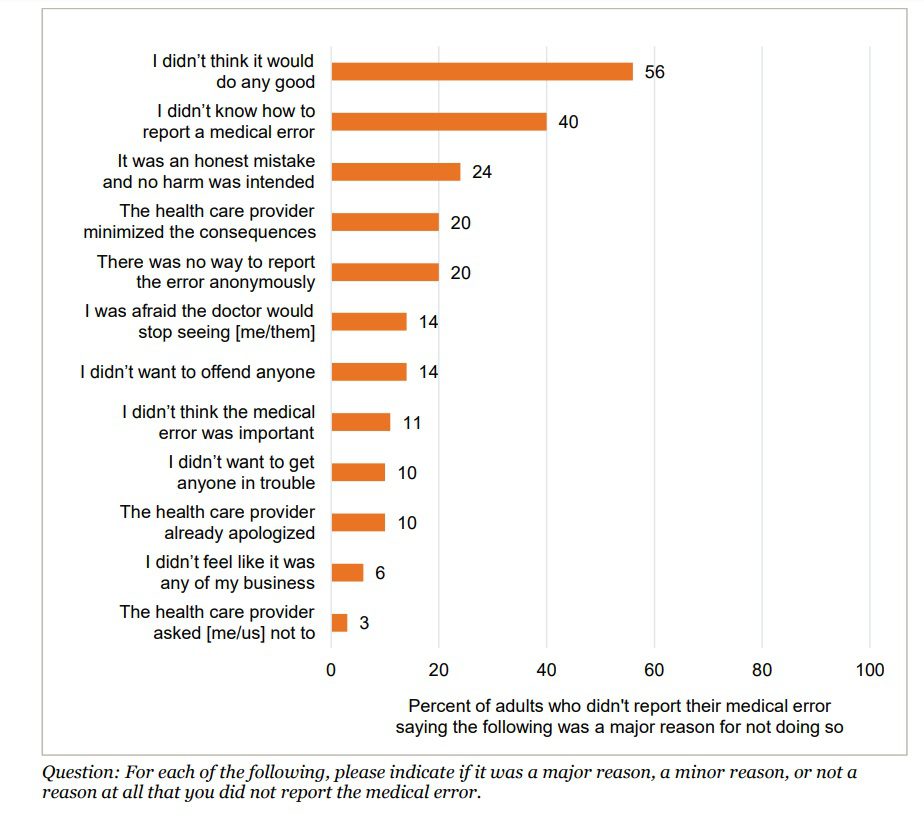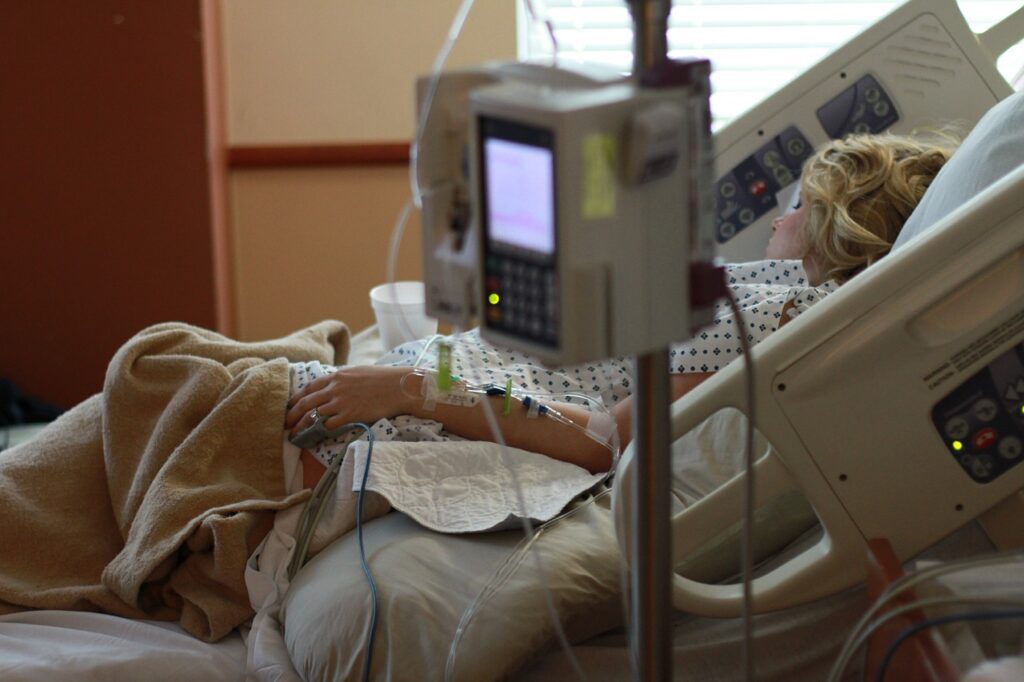When it Comes to Medical Malpractice, Follow the Four Ds

Putting your life in the hands of another individual takes a lot of faith. Yet, it is what patients do every day when they consent to medical care and treatment from healthcare professionals. From the diagnosing and treatment of ailments and medical conditions to surgery to repair serious damage or injury, patients put their health and well-being – and even their lives – into the hands of medical professionals.
Medical errors are ranked as the third-leading cause of death in the U.S. behind only heart disease and cancer. Those are just the individuals who have died due to medical malpractice. The figures are a bit murkier when it comes to the number of those living with permanent injuries caused by medical errors. A report from the Institute for Healthcare Improvement suggests that 1 in 5 Americans have experienced a medical error while receiving care. The same report indicates a majority of patients who were victims of medical errors and misjudgments in care do not report it because they do not believe it will help. Another 40 percent of patients included in the report said they did not file an accounting of the perceived incident because they were unsure how to do so.

Common Errors Leading to Malpractice Lawsuits
As patients, we must place our trust in the healthcare professionals charged with our care. Even the best healthcare practitioners can make mistakes, and when they do, those errors in judgment can significantly impact patients’ lives.
Several common medical errors lead to malpractice claims.
- A misdiagnosis or delayed diagnosis of a condition or illness is one of the most common reasons patients pursue legal action against medical providers. Sometimes it can be difficult to identify conditions; other times, the inability to find a cause can be attributed to inattentiveness from healthcare practitioners. When this happens, patients may not receive the treatment or medication needed to help remedy the problem. A delayed diagnosis, especially for conditions such as cancer, can mean the difference between life and death for the patient.
- Medication errors are another common reason for medical malpractice claims. An average of 1.3 million Americans is injured each year due to medication errors. Of these errors, 1 in 5 involved cardiovascular drugs. Errors related to diabetes medications like insulin increased more than 300 percent in one year. Sometimes the errors in judgment are caused by the prescribing doctor, while other times they may be caused by a pharmacist filling the prescription. Prescribing medication for an illness the patient does not have – part of misdiagnosing a condition – can also cause severe reactions in patients.
- Anesthesia errors can be terrifying for patients who experience them. They may be awake during a surgical procedure and feeling pain but unable to alert the doctors and nurses of the issue. The other end of the spectrum with anesthesia is being administered too high of a dosage, which can cause permanent damage and even death in some instances.
- Surgery errors are becoming extremely common and can involve leaving instruments or other surgery tools inside a patient or performing a procedure on the incorrect body part. Surgery mistakes are the reason for one-third of all medical malpractice claims.
- Injuries during childbirth are another reason for medical malpractice lawsuits. When a birth complication that should have been anticipated before delivery is the reason for an injury to the mother or child during labor, there is cause for a medical malpractice claim. The improper use of birthing methods or tools that cause permanent damage to the mother or child also is a reason to consider filing.
- Cosmetic surgery procedures and errors are cause for medical malpractice claims. While cosmetic surgery comes with certain assumed risks, that does not mean plastic surgeons and facilities were plastic surgery procedures are performed cannot be held accountable for grievous issues resulting in pain and suffering or even physical deformation. For instance, a plastic surgeon who uses faulty breast implants that later leak and cause medical issues for a former patient can be sued for medical malpractice.
- Nursing homes and hospitals can be charged with medical malpractice if their staff are neglectful of those charged to their care and that negligence causes harm to a patient or resident.
Patients who have suffered any one of these common experiences can consult with our team of medical malpractice professionals to determine if a lawsuit is appropriate. We have the experience and knowledge to evaluate your case for efficacy and advise whether a lawsuit or other approach is better suited to your scenario.
Factors Influencing the Risk of Medical Malpractice Cases
Before the COVID-19 global pandemic, telehealth was not widely used by Americans. With its use on the uptick here in the U.S. and across the globe, it has the potential to influence the number of medical malpractice cases in the U.S. There are several concerns attributed to telehealth:
- There is an increased risk of breach of patient data with healthcare professionals using online platforms to conduct assessments and discuss sensitive issues with patients.
- There is an increased risk of misdiagnosis by healthcare providers who are limited by the scope of what they can see on their computer screen and glean from the patient via questioning about what ails them.
- There is an increased risk of diagnostic errors due to improperly-performing software or other glitches with Internet-based healthcare platforms.
- There is an increased risk of improper documentation from the healthcare provider following a telehealth visit that could impact a patient’s future care.
Medical Negligence vs. Medical Malpractice
Patients who are living with permanent damage and suffering caused by medical errors may not realize there is a difference between medical negligence and medical malpractice. While the two legal terms sound similar, one involves intent while the other does not.
By legal definition, medical malpractice involves the breach of duty of care by a medical practitioner or healthcare facility. If a patient can prove a healthcare provider used treatment or procedure that was inappropriate for their care, this lends itself to intent. Medical negligence involves a mistake that is made by a medical practitioner or healthcare facility that results in temporary or permanent pain or injury to the patient. The difference between malpractice and negligence is that medical negligence is considered a true mistake, with no intent on the part of the medical provider or facility to cause injury to the patient. An example would be a surgeon leaving a sponge inside a patient after a surgical procedure. That would be considered negligence, not malpractice.
If you are unsure whether your case falls under the guidelines of medical malpractice or medical negligence, the experienced team at Romero Law can help. We have the expertise to help sort through your case and approach it in a manner that will ensure a successful outcome.

Identifying the Four Ds of Medical Malpractice
Identifying the Four Ds of Medical Malpractice can help patients determine if they should pursue a case against a medical practitioner or healthcare facility.
D#1 – Duty of Care
Once a healthcare practitioner or facility agrees to provide medical services or treatment to a patient, they have a duty of care to uphold. This simply means that the healthcare professional or facility treating the patient has anticipated all risks involved with doing so and will take care to prevent the patient from being harmed during treatment.
D#2 – Deviation From Care Standards
Healthcare professionals and facilities are expected to provide patients with a level of care similar to what they would receive from another qualified healthcare practitioner under similar circumstances. Deviations can include the misinterpretation of a diagnostic test or report, prescribing the wrong medication or improper dosages of medication, and recommending surgery that is not necessary for the successful treatment of an injury or illness.
D#3 – Direct Cause
This goes back to the notion of intent. A patient must be able to prove an act of a healthcare provider or facility was the direct cause of their injury and not another intervening event. Take, for example, the situation with the sponge left inside a patient after a surgical procedure that later caused a secondary infection. That would be clear actionable causation, as the patient would have documentation of the sponge being identified as the cause of the infection. There may be other circumstances that are not as clear-cut. Proving causation could involve medical reports and witness testimony to support the claim.
D#4 – Damages
A medical malpractice attorney is required to provide evidence that supports the claim that a medical provider or facility’s negligence caused damages to their client. Examples of such documentation include but are not limited to:
– Additional medical treatment
– Medical bills
– Lost wages
It is important to note that not all damages are physical. Medical malpractice can leave victims with severe emotional trauma. This is taken into consideration when evaluating a potential medical malpractice case. As attorneys highly skilled in medical malpractice law in Albuquerque, the team at Romero Law knows how to sort the facts and information needed to prove your case. We will review your circumstances and all supporting evidence in a case before making a recommendation on how to proceed.
Four Reasons to Hire a Medical Malpractice Lawyer
Medical malpractice is a highly-specialized concentration of legal practice. Patients who believe they are victims of medical malpractice should not place the success of their cases into the hands of lawyers who are not experts in this area. Inexperienced lawyers may underestimate the difficulty of proving damages, while others may not provide the same level of services to their clients that an attorney well-versed in medical malpractice offers. Do not try to handle your case on your own. It is the worst mistake patients make when it comes to medical malpractice.
Here are four reasons why it is ideal to hire a medical malpractice lawyer familiar with this concentration of law.
- They can communicate with the insurance companies
Insurance companies are not your friend when it comes to medical malpractice. They are concerned with minimizing the impact on their bottom lines and not necessarily in doing what is in the best interest of the insured. A medical malpractice attorney can intervene on your behalf and negotiate to ensure you are receiving the benefits owed to you. - They can estimate an award for your claim
Attorneys who are experienced with medical malpractice claims can tell patients if they have a case. If there is evidence to support a claim, your lawyer should be able to provide an estimate on what you can expect to be awarded in damages. - They can negotiate a settlement
Eight out of 10 cases end up in settlements, so finding a medical malpractice attorney who is a great negotiator is paramount. Attorneys can use their skills and experience to lean on healthcare providers and facilities who understand that public trials about claims of medical malpractice can tarnish their reputation with other patients. They will be eager to negotiate with a lawyer who is firm but fair. - They can accelerate the claims process
Medical malpractice claims are complex. Navigating through the process can leave patients feeling victimized a second time. When an attorney is involved in the process, healthcare practitioners and facilities are less likely to drag their collective feet in processing your claim.
It is important to remember that the statute of limitations for filing a medical malpractice claim in New Mexico is three years from the date of the alleged malpractice incident. Patients who believe they are victims of medical malpractice or negligence should consult with an attorney right away to preserve their rights to litigation.
Recognize the Signs of a Reputable Attorney
There are a lot of attorneys available from which to choose. In the greater Albuquerque area alone, more than 70 firms are claiming they can represent clients in medical malpractice cases. At Romero Law, we do not make empty promises to prospective clients. We offer the following qualities that any reputable medical malpractice attorney should possess:
- We are experienced in representing clients in medical malpractice cases and will not encourage clients to pursue cases that are not likely to have a favorable outcome.
- We possess both legal and medical knowledge and can help identify when actions of medical personnel or healthcare facilities are responsible for a patient’s pain and suffering.
- We are excellent negotiators. We want to spare our clients the stress of going through a medical malpractice lawsuit and will leverage our skills to help negotiate a settlement when possible.
- We offer our clients a fair fee structure. We explain how we are compensated for our services, so clients are not hit with surprise bills.
- We do not back down in pursuit of your claim. We treat every one of our clients as members of our extended family and will fight to get them the damages they deserve.
A Final Word on Medical Malpractice
Medical malpractice cases in Albuquerque are challenging to litigate. The team at Romero Law will do everything in its power to help patients injured by medical malpractice and medical negligence to receive fair compensation for their injuries. Contact us today for a no-obligation consultation to assess your case.
